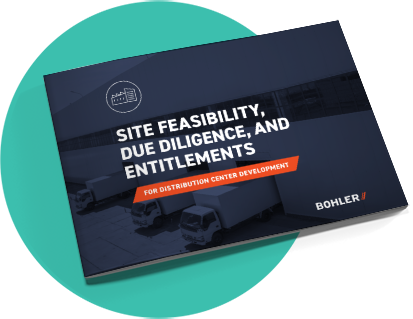Stay in the Know
Get our insights and latest news straight to your inbox.
Anyone driving along Interstate 85 in North Carolina and beyond can see the unprecedented volume of industrial construction activity along the route.
In a recent panel at the InterFace I-85 Industrial Corridor Conference, I joined industry experts – including Sean McDonnell, Sr. VP of Stonemont Financial Group; Steven McGee, Director of Rockefeller Group; John Barker, President and CDO of Red Rock Development; Alan Lewis, Managing Partner of The Keith Corporation; and Joey Smith, VP of Frampton Construction – in discussing the primary drivers behind the boom, the most highly demanded types of development, and where the latest trends are leading real estate professionals.
Throughout our discussion, attendees were curious to hear how their industry colleagues were tackling land development challenges and adapting to shifts in the market. Here are four strategies our panel discussed:
Developers are finding success in offering a variety of building sizes within an industrial park. This strategy attracts diverse tenants to a single location, providing more stability for a portfolio to weather market unknowns, like an economic downturn.
Another way to combat uncertainties is to develop and build facilities as long-term investments. When taking this approach, consider what the site could look like in 20 years.
As a result of current market conditions, including supply chain challenges, developers who historically operated on a build-to-suit model are strategizing differently. Instead of approaching development with a known tenant, many developers are building speculative facilities and identifying tenants during construction. This adaptation positions developers to respond to market demand more quickly.
The key to this strategy is to incorporate flexibility into the building and site design. As opposed to developing the property to meet the needs of specific tenants, developers should partner with their design team to ensure site layouts and building features are flexible enough to support a variety of tenants and occupiers. As an example, panelists had witnessed facilities with ample parking around buildings and deeper truck courts, which can be adapted to many end-user operations.
Versatile buildings and industrial complexes have the value-add of being able to flex and adapt quickly for future uses.
See Related: Flexible Design
The current lead time for construction supplies hovers around 180 days and material costs are approximately 20% higher than last year. For developers managing this market unpredictability, panel experts say the key is to assemble the right design, development, and construction team. Navigate the current conditions more effectively with a team that understands market challenges, is flexible, and works as a team to accomplish development goals.
When the easily developable sites are gone, developers need to think creatively and strategically with the land that’s left. It’s not always about maximizing square footage on a site anymore, my fellow panelists said. In some cases, doing so requires substantial investments in features like retaining walls, or mitigating wetlands and other environmentally sensitive areas. Developers are finding success in working with their design teams to identify the optimal balance for each property that may not necessarily maximize square footage but will result in significant cost savings in other areas.
A similar strategy is to consider rural sites, historically overlooked due to assumed offsite costs for utility extensions or traffic improvements. However, infill or rezoned sites in urban or suburban areas, in the panel’s experience, can sometimes require even more significant offsite improvements than the rural sites. My fellow panelists noted that a look at those properties an exit or two down the interstate is worthwhile.
Getting creative with the sites that are available could be the key to tackling high land costs as well. Developers finding success along the I-85 corridor are working with their team to set expectations with land sellers. In the panel’s experience, many sellers may believe they have the upper hand, but a strong project team can help owners understand the environmental or development challenges at hand and present a more realistic deal.

Given the widespread labor shortages across the nation, some developers are evaluating sites with nearby space for affordable or workforce housing, and developing that, too. Municipalities are drawn to this creative strategy because it combines a new facility with a strategically located workforce within walking distance. In the panel’s experience, jurisdictions have been more open to approving proposals that include multifamily housing and often have demonstrated a willingness to assist with necessary utilities like water and sewer connections.
While a variety of industrial warehouse, distribution, and manufacturing products remain in high demand along I-85 and throughout the Southeast, developers are still tackling rising costs and supply chain unpredictability. With flexible, adaptable, and creative strategies, the panel said developers are making successful deals and looking forward to the corridor’s continued growth for years to come.
Get our insights and latest news straight to your inbox.